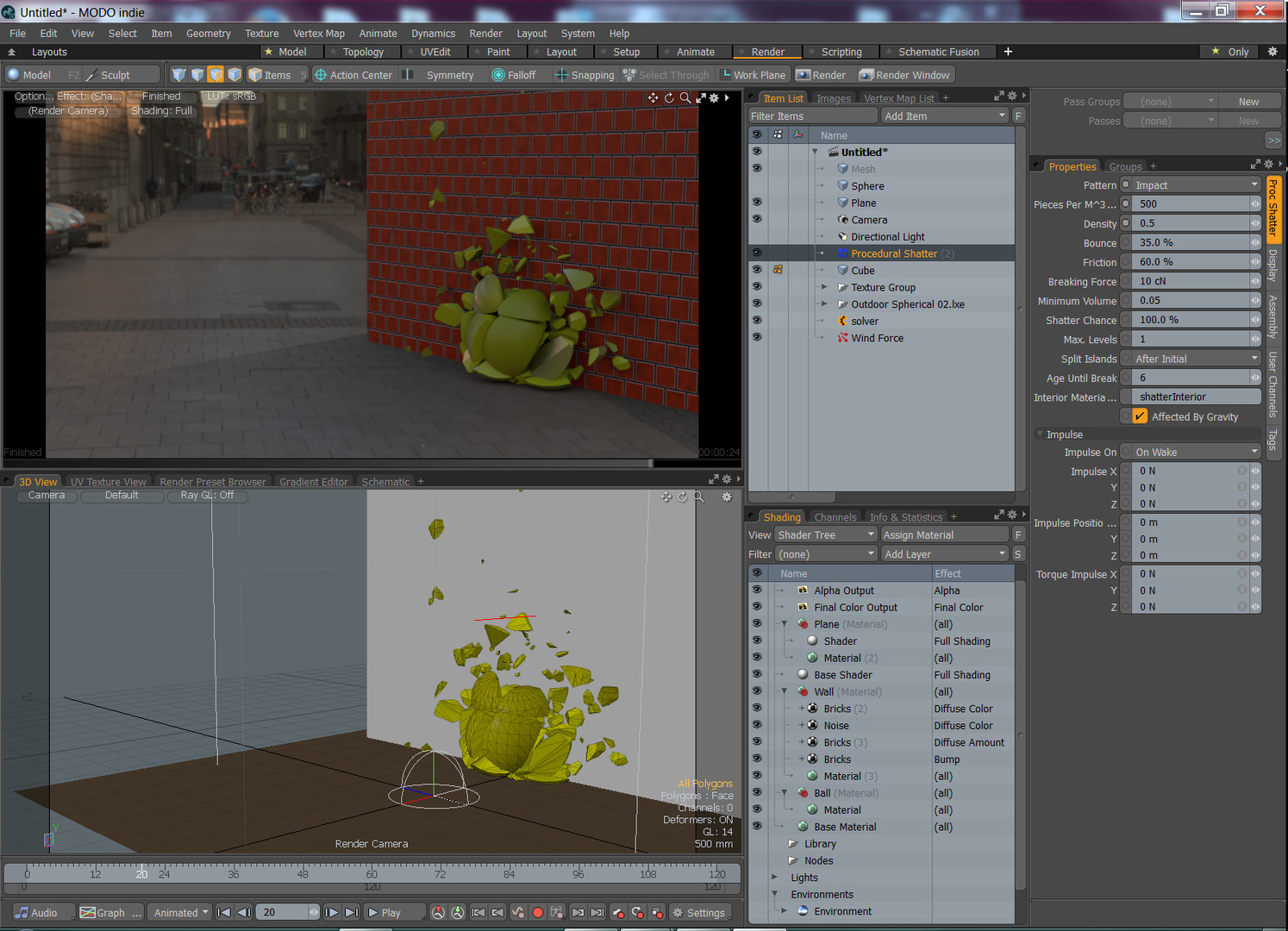MODO Indie 10 Mac OS
These key combinations apply only to Mac computers with an Intel processor, not Mac computers with Apple silicon.
- Modo Indie 10 Mac Os Catalina
- Modo Indie 10 Mac Os Compatibility
- Modo Indie 10 Mac Os Theme Download
- Modo Indie 10 Mac Os Catalina
- Modo Indie 10 Mac Os X
To use any of these key combinations, press and hold the keys immediately after pressing the power button to turn on your Mac, or after your Mac begins to restart. Keep holding until the described behavior occurs.
- Command (⌘)-R: Start up from the built-in macOS Recovery system. Or use Option-Command-R or Shift-Option-Command-R to start up from macOS Recovery over the Internet. macOS Recovery installs different versions of macOS, depending on the key combination you use while starting up. If your Mac is using a firmware password, you're prompted to enter the password.
- Option (⌥) or Alt: Start up to Startup Manager, which allows you to choose other available startup disks or volumes. If your Mac is using a firmware password, you're prompted to enter the password.
- Option-Command-P-R:Reset NVRAM or PRAM. If your Mac is using a firmware password, it ignores this key combination or starts up from macOS Recovery.
- Shift (⇧): Start up in safe mode. Disabled when using a firmware password.
- D: Start up to the Apple Diagnostics utility. Or use Option-Dto start up to this utility over the Internet. Disabled when using a firmware password.
- N: Start up from a NetBoot server, if your Mac supports network startup volumes. To use the default boot image on the server, hold down Option-N instead. Disabled when using a firmware password.
- Command-S: Start up in single-user mode. Disabled in macOS Mojave or later, or when using a firmware password.
- T: Start up in target disk mode. Disabled when using a firmware password.
- Command-V: Start up in verbose mode. Disabled when using a firmware password.
- Eject (⏏) or F12 or mouse button or trackpad button: Eject removable media, such as an optical disc. Disabled when using a firmware password.
If a key combination doesn't work
Modo Indie 10 Mac Os Catalina
If a key combination doesn't work at startup, one of these solutions might help:
- Note: If you have installed the Modo application in another folder, launch the Modo 15.0v1 (Safe Mode) shortcut from that folder. If Modo successfully launches in Safe Mode, click File Config Save to overwrite your existing configuration file that was causing Modo to crash. Licensing Modo on Mac. The following licensing methods are available.
- The Mac OS X operating system is a modern OS with a BSD Unix core, and several application environments running on top of it. The primary native application environment is Cocoa, whose applications are typically developed in Objective-C, an object-oriented superset of ANSI C whose syntax and messaging behaviour are inspired by Smalltalk.
What is Modo for Mac MODO brings you the next generation of 3D modeling, animation, sculpting, effects and rendering in a powerful integrated package.
- Press and hold all keys in the combination together, not one at a time.
- Shut down your Mac. Then press the power button to turn on your Mac. Then press and hold the keys as your Mac starts up.
- Wait a few seconds before pressing the keys, to give your Mac more time to recognize the keyboard as it starts up. Some keyboards have a light that flashes briefly at startup, indicating that the keyboard is recognized and ready for use.
- If you're using a wireless keyboard, plug it into your Mac, if possible. Or use your built-in keyboard or a wired keyboard. If you're using a keyboard made for a PC, such as a keyboard with a Windows logo, try a keyboard made for Mac.
- If you're using Boot Camp to start up from Microsoft Windows, set Startup Disk preferences to start up from macOS instead. Then shut down or restart and try again.
Remember that some key combinations are disabled when your Mac is using a firmware password.
Learn more
- Keyboard shortcuts that you can use after your Mac has started up.
| Click here to return to the '10.5: Reset a user's password in single user mode' hint |
http://docs.info.apple.com/article.html?artnum=306840
..which has you first delete, then change, the old password.

Modo Indie 10 Mac Os Compatibility
Hmmm this article does only delete a part of a user's record, the AuthAuthority value, in fact. This article is useful if you have a user created in 10.2.x and migrated in 10.5.
Beginning with 10.3, Apple changed the way passwords are stored for more security. Before 10.3, passwords were stored in the NetInfo database, in the users entries, using the unsecure crypt hash. Starting with 10.3, passwords are using stronger hashes (SHA-1 and beginning with 10.4 a Salted-SHA1) and they are no longer stored in the users entries but in /private/var/db/shadow/hash, in a file which is named with each user's GeneratedUID (not the old unix UID, be careful). This folder is only accessible to root and the AuthAuthority attribute tells the system which kind of password you have.
So, if your user was created before 10.3 and you have migrated it, you may want to do what this KB article explains.
The dscl command portion of this hint will work in 10.4 - I just used it to remotely reset admin passwords on several machines via ARD.
Thanks!!!
---
0
Once you mount the file system, can't you just use passwd <username> ?
Of course neither method will change the user's login keychain password.
passwd will change the user's password in whatever way the system has been set up. Unix systems don't all use /etc/passwd, actually most standalone systems use /etc/shadow not /etc/passwd. Most networked systems use ldap or kerberos or even opendirectory. If passwd has been tailored correctly to the mac it should change the user's password correctly. Maybe not the keychain access password though.
N.B. I haven't tried using passwd in 10.5.
I did just the following after rebooting to single user mode in 10.5 and it worked:
 After the next reboot my machine didn't automatically login, even though it is configured to do so, and it prompted me for the keychain password in order join my wireless network, but it did honor the new password and it sounds like you can subsequently reset the password in System Preferences to change the keychain password.
After the next reboot my machine didn't automatically login, even though it is configured to do so, and it prompted me for the keychain password in order join my wireless network, but it did honor the new password and it sounds like you can subsequently reset the password in System Preferences to change the keychain password. You don't have to worry about the Keychain password. Once you change the user's password and can log into the computer all need to do is simply go into the Accounts preference pane and change the password there to either the new password or something different if you so choose. That action will then automatically change the Keychain Password. I've done this several hundred times on Macs from 10.0 through 10.4.11 I haven't yet had to change a password on a Leopard box but I'm sure it will work just the same.
---
Tino XIII
Modo Indie 10 Mac Os Theme Download
Unfortunately, this doesn't seem to work with 10.5. I just did this and now can't access the login keychain (OS 10.5.6). Unfortunately, I don't think there's any way around this.
Aside from Open Firmware/EFI passwords, you can configure your Mac so that the root password must be entered in order to access Single User Mode. If your root account is disabled, then it is impossible to enter the root password, and Single User Mode cannot be started.
To do this, the console and ttys must be marked as insecure in /etc/ttys:
1. Log in as administrator
2. Open Terminal
3. cd /etc
4. sudo cp ttys ttys.old (backs up previous ttys config).
5. sudo pico ttys
6. Replace all occurrences of the word 'secure' with 'insecure' at any lines that do not begin with a '#'
7. Exit, saving changes.
These instructions are from the Apple Mac OS X Security Configuration manual.
Modo Indie 10 Mac Os Catalina
This procedure works except that the password for login.keychain remains lost. What will reset that? Thanks!